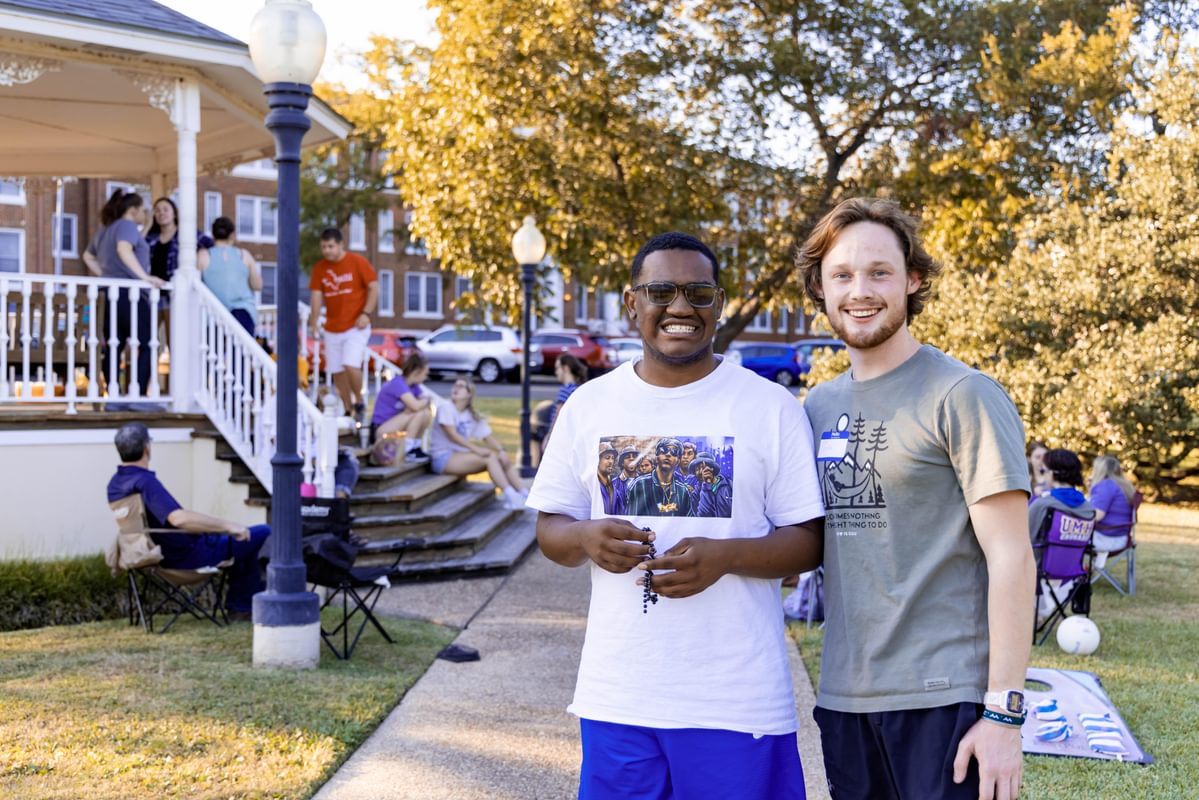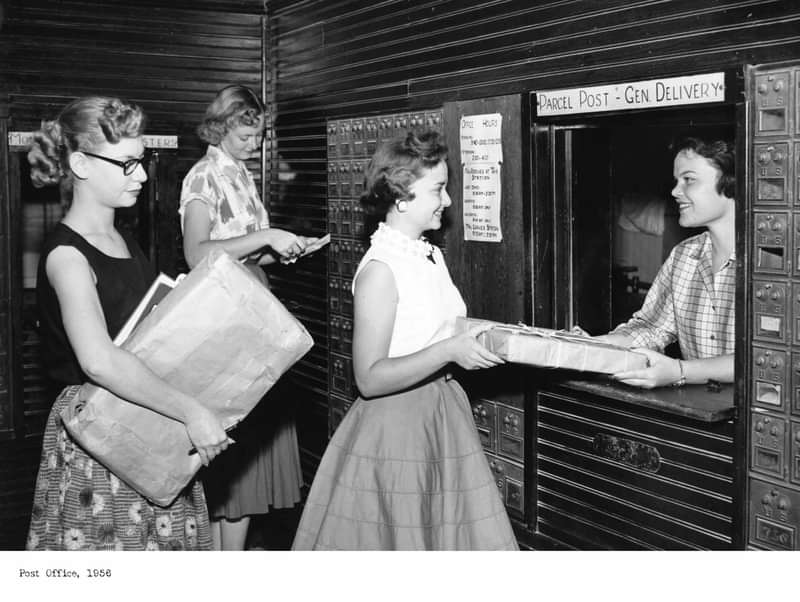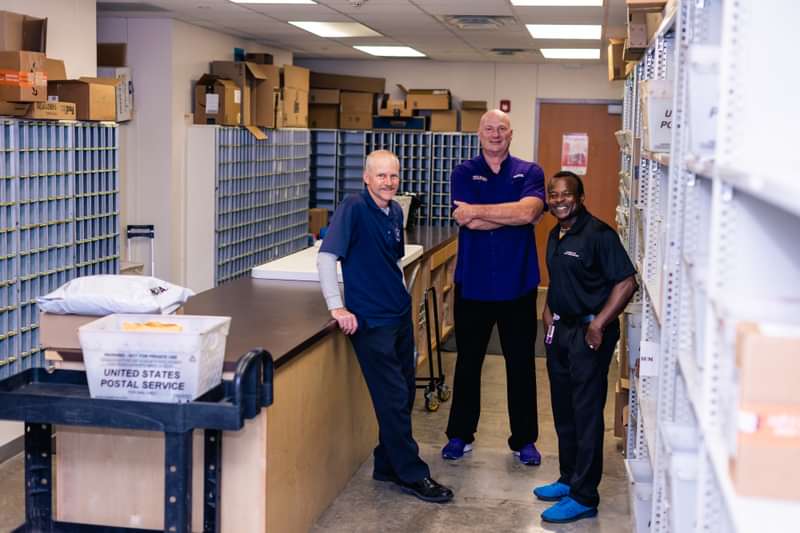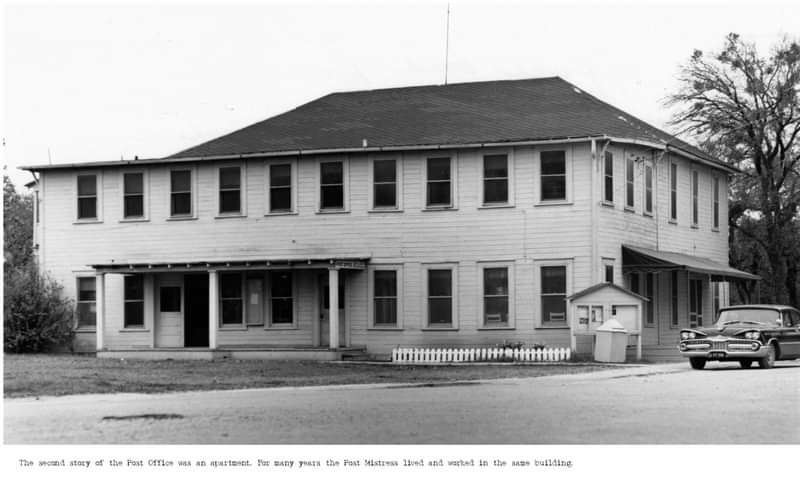By Christi Mays
Instead of sitting around with laptops and cell phones at Bawcom Student Union like students do today, hanging out at the post office was the place to be when Julia (Amason) Walker ‘60 was at Mary Hardin-Baylor.

By Christi Mays
Instead of sitting around with laptops and cell phones at Bawcom Student Union like students do today, hanging out at the post office was the place to be when Julia (Amason) Walker ‘60 was at Mary Hardin-Baylor.
Even though it’s been more than 60 years since she graduated, Julia vividly remembers running to the campus post office every day to check box No. 124. Long before tapping out a text connected us to the world, communication revolved around the handwritten word.
Along with her five best friends, Julia would take off from her room on the third floor of Stribling Hall and stroll over to a small building near what is now Walton Chapel and wait until she could get a look inside her box.

The small building also contained the bookstore where she and a gaggle of girls would congregate between classes, waiting on Postmistress Stegall to signal the mail was out. She wouldn’t allow the girls to check their boxes until every piece had been posted, which was usually around 10 a.m. Gathered around tables inside the bookstore, which also served as a general store, Julia and her friends drank coffee and bottles of Coke while sharing a sweet treat.
“We looked forward to getting letters, and it was very special,” Julia said. “Today, it would seem really out of date because we have all these modern conveniences with communication at our fingertips. Like this morning, I’ve already talked to my grandchildren!”
The oldest of three sisters, who also came to Mary Hardin-Baylor, Julia received weekly letters from her mother and sisters.
“My mother wrote beautiful letters to me, encouraging and uplifting me, ‘You can do this!’” she said. “I tended to take on more than I should have and would be overwhelmed. But when I got her letters, I would try harder.”
When Grace (Dannelley) McDonald ‘70 was in elementary and middle school, one of her favorite things was to run over to the MHB post office and bookstore and chat with all the college girls.
Grace, who lived on or near campus since she was eight years old, would meet up with a buddy after school and head over to the post office (when it was located near what is now Walton Chapel).
Ironically, one of their houses was located where the current post office sits now inside the Mabee Student Success Center. Because her dad worked at MHB and her family lived on campus, their mailbox was located at the MHB post office.
Grace and her friend would sit at the same tables inside the bookstore where Julia Walker had once sat. They couldn’t wait for all the college girls to come by so they could say “hello.”
“The college was smaller then, and we thought we knew them all,” Grace recalled with a chuckle. “I guess we were kind of like their little brothers and sisters they had left back home.”
Grace later attended MHB as a student, and even though her parents still lived on campus, she resided in Burt Hall her freshman year. By then, the post office had moved to the basement of Ely-Pepper Hall; however, she didn’t receive many handwritten letters since her parents lived so close.
Even so, she’s always cherished the many memories of sitting around the post office and chatting with students. “They were just kind of like our family.”

According to museum documents, letters weren’t the only items students received in the mail over the years.
Perhaps one of the earliest records of packages students received was of a dress made in Philadelphia in 1883. It was the graduation dress for Carrie Clay Thornhill. The dress arrived a day or two before commencement, and instead of being the usual white, it was green. There was no time to make another dress, so President John Hill Luther and the board held an emergency meeting. They reluctantly allowed her to graduate in the green dress.
On April 21, 1886, officials laid the first cornerstone on campus amid a lavish ceremony. Except, it almost didn't happen. On the day of the ceremony, the stone was nowhere to be found. Wells Fargo Company was entrusted with the shipping, but the train had arrived, and the stone wasn't on board. A little town near Temple telegraphed saying, “that rock you have been fussing about so much" had come there instead.
The Wells Fargo agent, Mr. W. D. Woodruff, ensured that the cornerstone arrived just in time for the ceremony through frantic telegrams and a special train sent to fetch the stone.
In the 1950s, there were letters back and forth from Peggy Albin ‘58 and her mother, who each year mailed her daughter a milk chocolate cake for her birthday. The cake was a big hit with Peggy and her friends!
Even today, students are mailing and receiving extraordinary objects. Several years ago, during the painted rock craze, the UMHB post office began receiving—and sending out—rocks. No box or envelope. Just rocks.
“Students were finding flat rocks and painting one side and on the other side, would put ‘to’ and ‘from’ and a stamp. The post office will accept anything to mail as long as you can get the address and postage on it,” said Chuck Mills, manager of mail services.
He says the mailroom workers always seem to know when something is trending on social media because “weird” things start showing up in the mail. For instance, during the fall before COVID-19 hit, students were receiving basketballs in the mail. They were signed with notes right on the ball. And then there was the time the mailroom received a dozen or so huge Idaho potatoes. (Again, no box or envelope. Just a potato in the mail addressed to a student).
“That was a mess!” Chuck exhaled. But perhaps the most unusual thing of all that has gone in or out of the UMHB post office was a frozen, full-sized smoked brisket from Miller’s Smokehouse—all the way to Oregon.
“The first year I was here, we had a student from Oregon who fell in love with Central Texas barbecue,” Chuck said. “He bought a brisket and froze that thing, and we packed it in dry ice for him and sent it back home to his parents in Oregon. He was a hoot!”
Sadly, the days of students congregating at the post office to chat with friends may be a thing of the past, Chuck said. “It’s just grab-and-go now. They still bring their posse with them, but they don’t stand around chatting. I think it’s because they have so many other places to do that.”
Surprisingly, though, he said a notable number of students still receive handwritten letters.
“Normally, it’s from granny, the crazy aunt, or somebody from the church,” he said, adding that some girl students also still send handwritten letters to their boyfriends and friends back home. “I think is pretty cool that they’re actually sending a letter and not a text.”
But just because the handwritten form of communication may have slowed down considerably doesn’t mean the crew at the post office has time to sit around.
On average, the three-man team (plus eight student workers) sort and deliver 300 to 350 pieces of mail daily, totaling more than 10,000 pieces each month. Since COVID-19 hit in March 2019, the number of packages received at the post office has increased tenfold, Chuck said. Depending on the month, they receive between 3,500 to 4,000 packages and eight to 10 grocery deliveries each week to students living in residence halls.
He said when school starts each fall, there used to be a week or two delay before the mailroom would get slammed with shipments for students—books, dorm room necessities, etc.
“This year, on the first day of school, an Amazon truck pulled up and dropped off 800 packages!” Chuck said. “And the shipments didn’t die down until November.”
With close to 3,000 students living on campus, Chuck said he gets to see most of them every day as they’re picking up mail at their boxes.
“We get to know them in about a week or so, ‘How are your classes going? How was your test today? What student orgs do you belong to?’” he said. “For us, that’s the really cool part.”

As for Julia Walker, who still cherishes the letters her mother wrote to her in college, she’ll always warmly remember the days she received them at box No. 124. “I have very fond memories of the bookstore and the people and the letters that I received.”
Those letters helped lead her to be the woman she is today and to do the work the Lord wanted her to do as a schoolteacher.
“There’s something very real about a letter in the words that someone writes,” she said. “Some of the most beautiful writing I’ve ever read was in those letters from people that I loved so much.”
To learn more about the history of the post offices on campus, visit the free rotating exhibit at the Musick Alumni Center and Museum at the Parker House from now through April.
###